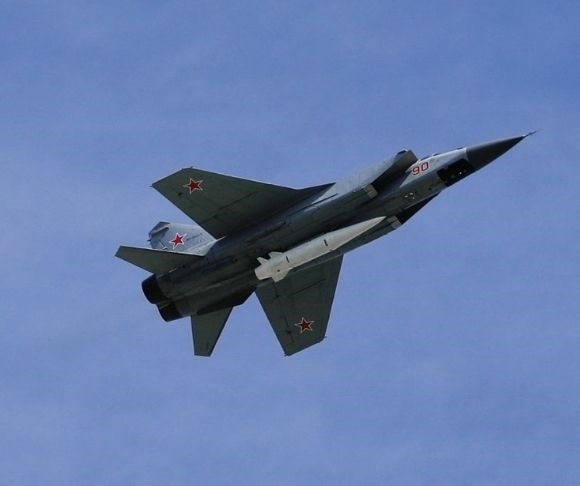Does Russia’s attack on Ukraine with hypersonic missiles matter? The Kremlin’s defense ministry claimed its invading forces used a Kinzhal hypersonic missile against an underground warehouse in western Ukraine. If true, this would be the weapon’s first use in combat since its introduction in 2018. Speaking at a recent Business Roundtable meeting, President Joe Biden confirmed Russia’s use of the Kinzhal, which translates to “dagger.” Because Ukrainian forces are taking a significant toll on the invaders, Vladimir Putin is becoming more desperate in pressing his attacks, Biden suggested. But Moscow’s hypersonic missiles may have other warfighting implications. The Russians may be adjusting to the battle flow.
Russia announced a test firing of similar Zircon hypersonic cruise missiles from naval vessels in November 2021, reporting successful hits of practice targets more than 200 miles away. Hypersonic weapons achieve speeds greater than Mach 5, or five times the speed of sound, and some are said to reach Mach 20 and remain highly maneuverable at that speed. The primary advantage of such missiles is that they are so fast and nearly impossible to counter.
[articlepoll align=”right”] “The Kinzhal aviation and missile platform has been developed based on the upgraded Mikoyan MIG-31 aircraft. It is furnished with precision hypersonic aero-ballistic missile making it possible to strike targets at a distance of over 2,000 km [1,220 miles] without entering an enemy’s air defense area,” Aerospace Force Commander-in-Chief Sergei Surovikin told the TASS Russian News Agency nearly four years ago.
The only Russian fighter aircraft configured to launch the Dagger is the MIG-31K that was used against Ukrainian military installations. Furthermore, the missile’s warhead weighs roughly the same as the GBU-16 US laser-guided 1,000-pound bomb. Compared with the US F-35 stealth fighter, for example, which can carry two 2,000-pound precision-guided bombs internally and four more externally on wing stations, the MIG-31K carrying just one missile does not seem capable of substantially influencing the outcome of a ground war.

(Photo by Sefa Karacan/Anadolu Agency/Getty Images)
The current situation in Ukraine appears to be that thousands of shoulder-fired ground-to-air missiles — like the US FIM-92 Stinger Man-Portable Air Defense system, or MANPADs, with an effective range of 15,000 feet — are making the airspace over Ukraine deadly for Russian aircraft. Consequently, after more than two weeks of fighting, the Kremlin has not been able to establish air superiority. The Ukrainian defense ministry claimed to have destroyed 97 Russian aircraft and 121 helicopters, though those numbers are not independently confirmed. Without air superiority, Russia’s ground troops must contend directly with the Ukrainian military. Therefore, the Russian juggernaut is stalled in many areas, not advancing. But with the Kinzhal’s reported range of 1,200 miles, Putin’s aircraft can remain over Russian territory and launch the missile.
In addition, Putin’s forces may be running out of standard precision-guided munitions (PGM). “We have seen [the Russians] rely a little bit more on dumb bombs, if you will, non-precision guidance. We think it’s possible that they might be either conserving their precision-guided munitions or are beginning to experience shortages. Again, it’s not 100% clear,” a Pentagon official said, as reported in Defense World. Running low may be a problem, but so is the reliability of the weapons. “We’ve also seen them suffer failures of some of their precision-guided munitions where they’re just not operating. They’re not falling either. They’re failing to launch, or they’re failing to hit the target, or they’re failing to explode on contact,” Defense One quoted a US official.
Whatever the reason the Russians elected to use their advanced hypersonic weapons, the impact on the ground war has been minimal. But the presence of the superfast missiles is a harbinger of what the United States and NATO can anticipate from Russia in the future. Defending ground targets against hypersonics is problematic and should prompt the United States to invest more in defending against these Russian weapons. At this time, it is difficult for the US military to identify, track, target, and destroy these Mach 5-plus weapons – and this capability shortfall must be fixed.
The views expressed are those of the author and not of any other affiliation.
~ Read more from Dave Patterson.




